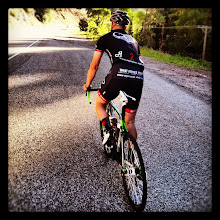
Lance Armstrong announced Tuesday (April 27th) that his return to racing after his crash would commence at the 23rd SRAM Tour of the Gila (New Mexico, USA), despite earlier reports of him and his Astana teamates being barred from the competition. The Tour of Gila started today and lasts for five days. This is his first race since his subsequent collar bone fracture in the Castilla y León in (Spain) stage race on March 23.
But the UCI had barred team Astana and Lance Armstrong from racing in the SRAM Tour of the Gila this week, enforcing rule 2.1.009 which states "only the UCI continental teams of the country, regional and club teams, national teams and mixed teams may participate in national events. Mixed teams may not include riders from a UCI ProTeam." Bla Bla Bla.
The rule is a UCI regulation and not a USA Cycling rule, and USA Cycling spokesman Alan Lee told VeloNews, "It's not our place to waive the rule or enforce it," Lee said. "From what we've been told they (the UCI) are choosing to enforce that rule in this case."
So to conform to the UCI rule Lance decided to take two of his Astana teamates to the race and enter under the team name “Mellow Johnny’s” which is the name of his bike shop in Texas.
Levi Leipheimer --one-third of the "Mellow Johnny's" team-- took first place at the Tour of The Gila's Stage 1 today. Lance Armstrong and Chris Horner rounded out the "Mellow Johnny's" team.
According to VeloNews.com, Leipheimer sprang from a disintegrating pack on the finish climb, taking a clear win ahead of Peter Stetina (Garmin-Felt) and Chris Baldwin (Rock Racing).
Leipheimer said he had some doubts about whether the team should go for the win so early in the five-day race, cites VeloNews.com.
"I said to Lance coming up here, 'maybe it would be better that we try and let somebody else win, ' " Leipheimer said at the finish. "And, he said something that made a lot of sense, he said, 'you know what, you are a winner, go win the race and we'll figure it out.' So we'll figure it out." For more results, visit the Team Astana's website.



